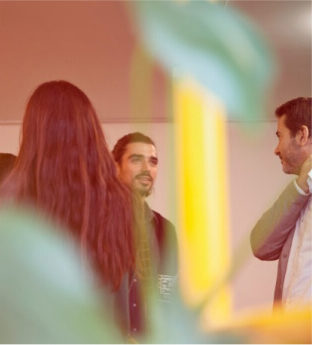The Hidden World of Modern Art Conservation
While visitors admire masterpieces in pristine gallery conditions, a sophisticated dance of science and artistry unfolds behind the scenes. Modern art conservation has evolved into a complex discipline that combines cutting-edge technology with traditional craftsmanship. This unseen world of preservation represents one of the most fascinating and crucial aspects of gallery operations.
Today's conservators face unprecedented challenges as they work to preserve not only traditional media but also contemporary works created with experimental materials. Their work requires an understanding of chemistry, art history, and material science, along with an artist's sensitive touch and an detective's analytical mind.
The Science of Preservation
Modern conservation laboratories look more like scientific research facilities than traditional art studios. Equipment like X-ray fluorescence spectrometers, infrared reflectography cameras, and digital microscopes allow conservators to analyze artworks at the molecular level. This technical analysis reveals hidden details about an artwork's composition, history, and condition that inform preservation strategies.
Conservation science has revolutionized our understanding of how artworks age and deteriorate. By studying the chemical composition of pigments, binding media, and support materials, conservators can predict how works will change over time and develop preventive measures to slow degradation.
Environmental Control Systems
The invisible battle against time occurs largely through sophisticated environmental control systems. Modern galleries employ complex HVAC systems that maintain precise temperature and humidity levels, while specialized lighting systems protect sensitive materials from photochemical damage. These systems operate within incredibly narrow parameters, often adjusting in real-time to changing conditions.
Recent advances in smart building technology have enabled more responsive and efficient environmental control. Wireless sensors throughout gallery spaces provide continuous monitoring, allowing for immediate adjustments to maintain optimal preservation conditions.
Contemporary Art Challenges
The preservation of contemporary art presents unique challenges that traditional conservation methods never anticipated. Works incorporating unconventional materials like plastics, electronics, or organic matter require innovative preservation strategies. Conservators must often collaborate with artists to understand their intentions regarding how works should age or be maintained.
Some contemporary artists deliberately use unstable materials or incorporate decay into their work, forcing conservators to grapple with philosophical questions about authenticity and artistic intent. These challenges have led to new approaches that focus on documenting and preserving artistic concepts as much as physical materials.
Digital Documentation
Advanced imaging technologies have transformed how galleries document and monitor their collections. Three-dimensional scanning, gigapixel photography, and spectral imaging create detailed records of each artwork's condition. These digital archives serve both conservation and scholarly purposes, allowing for precise tracking of changes over time.
Machine learning algorithms are increasingly being employed to analyze these vast digital archives, helping identify subtle patterns of deterioration and predicting conservation needs before visible damage occurs.
The Ethics of Intervention
Modern conservation ethics emphasize minimal intervention and reversibility. Every treatment decision must balance the need to preserve artwork against the risk of altering its essential character. This philosophical approach requires conservators to thoroughly document their decisions and methods, creating detailed records for future generations.
The field continues to debate fundamental questions about authenticity, artists' intentions, and the role of natural aging in an artwork's history. These discussions shape how galleries approach the long-term preservation of their collections.
Conservation Research Partnerships
Leading galleries are increasingly forming partnerships with universities and research institutions to advance conservation science. These collaborations bring together experts from various fields – chemists, materials scientists, art historians, and conservators – to tackle complex preservation challenges.
Research partnerships have led to breakthroughs in understanding artwork degradation mechanisms and developing new preservation techniques. This collaborative approach ensures that conservation practices continue to evolve alongside advances in materials science and technology.
These unseen aspects of gallery operations represent a crucial investment in preserving cultural heritage for future generations. The field's ongoing evolution reflects both technological advancement and deeper philosophical understanding of what it means to preserve art in all its forms.



